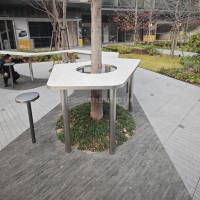Welcome to the website for landscape facilities products and knowledge.
How does the trash can’s design ensure it is easy to pair with waste diversion programs?
The design of a trash can plays a crucial role in ensuring seamless integration with waste diversion programs, which aim to reduce landfill waste by promoting recycling and composting. Modern trash cans are engineered with features like color-coded lids, labeled compartments, and ergonomic shapes to simplify waste sorting. For instance, dual or multi-compartment bins allow users to separate recyclables, organic waste, and general trash effortlessly.
Additionally, smart trash cans equipped with sensors or RFID technology can identify and sort waste automatically, further streamlining the process. Durable, weather-resistant materials ensure longevity, while standardized sizes make them compatible with municipal collection systems. By prioritizing user-friendly design and functionality, these bins encourage higher participation rates in waste diversion initiatives, contributing to a more sustainable future.
Innovations like foot pedals, touchless lids, and compact designs also enhance hygiene and convenience, making waste separation less cumbersome. Ultimately, a well-designed trash can is not just a container but a vital tool in achieving effective waste management goals.
Related search:

Recommendation
An outdoor bar counter with stainless steel and terrazzo materials in an irregular shape